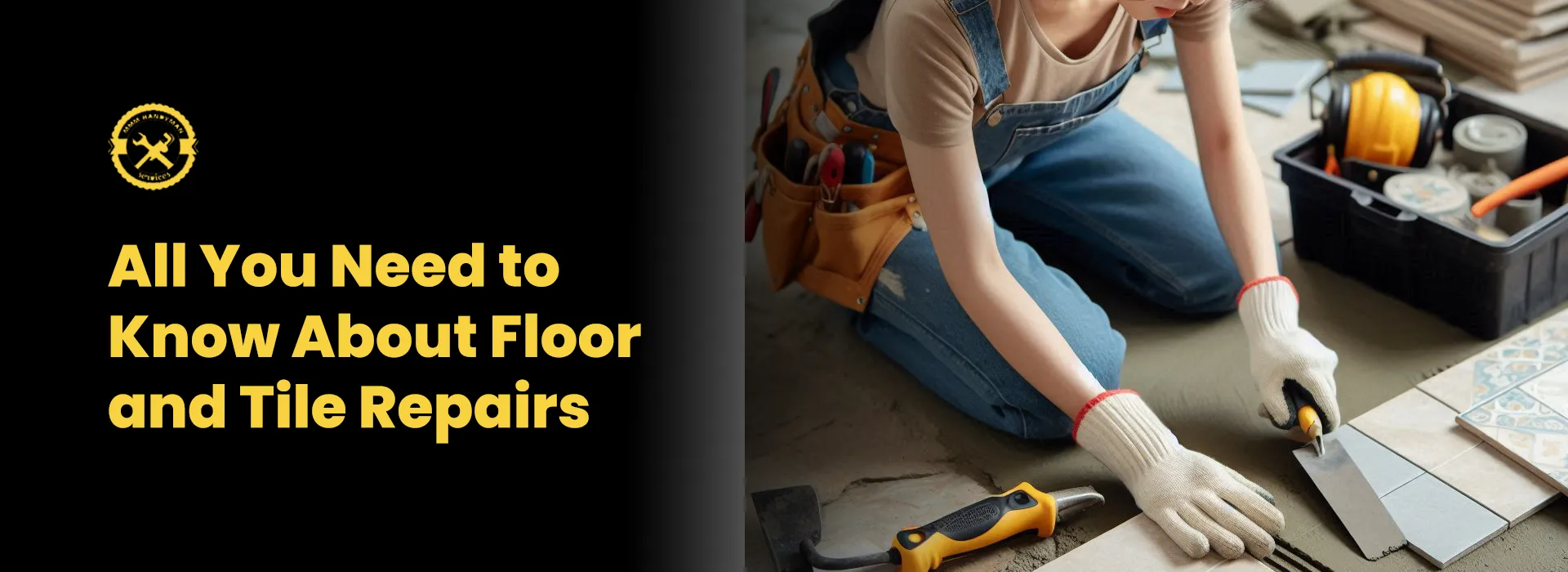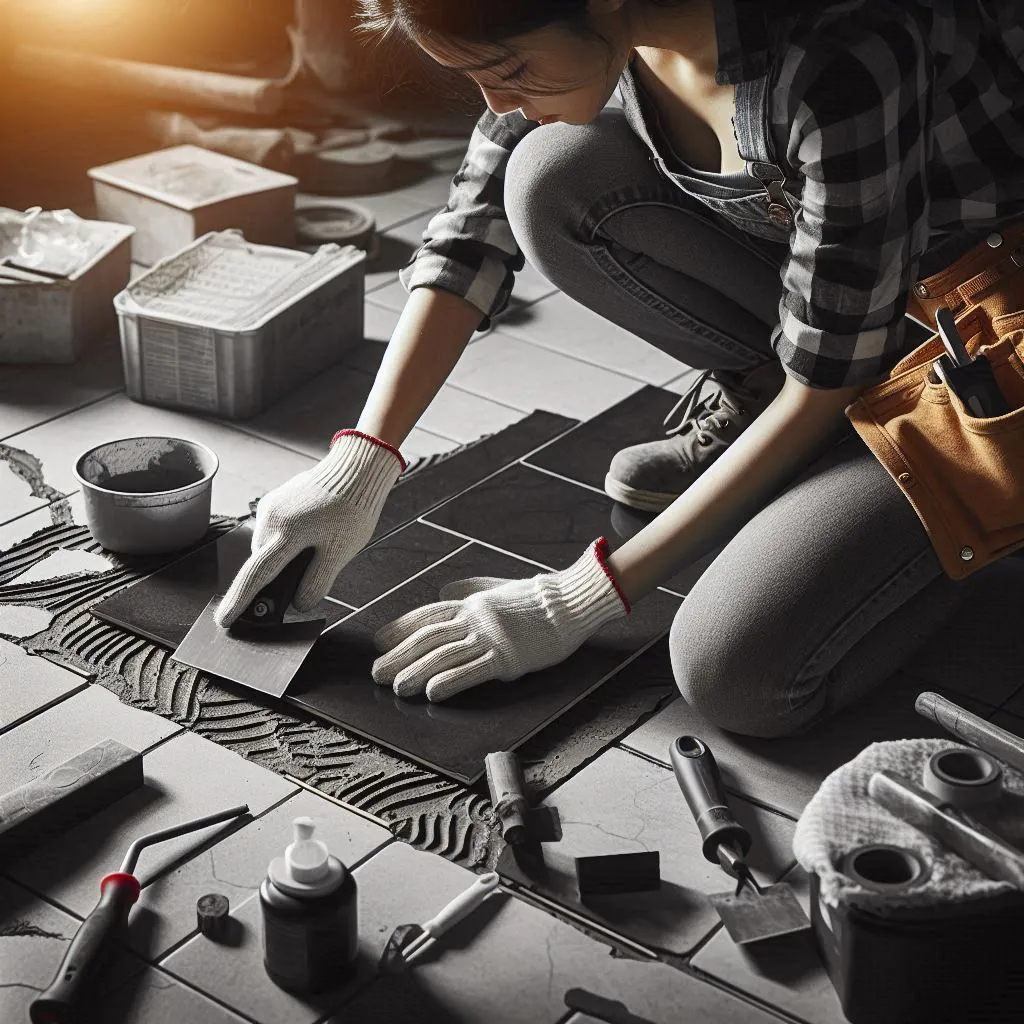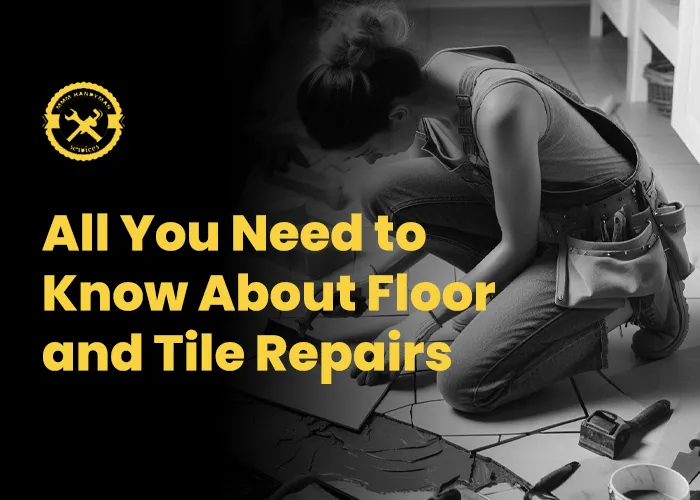
Floor and tile repairs are an essential aspect of maintaining a safe and attractive home or business environment. Whether it’s a cracked tile, worn-out flooring, or loose grout, these issues can significantly affect the aesthetic and functionality of your space. However, with the right approach and a bit of know-how, most floor and tile repairs can be handled effectively without the need for expensive replacements. This guide will walk you through the key steps, tips, and common issues related to floor and tile repairs, helping you tackle problems with confidence.
Table of Contents
Understanding Common Floor and Tile Problems
Cracked or Broken Tiles: One of the most common tile issues is cracks or breaks. This typically happens due to heavy impacts, shifting foundations, or wear and tear over time. Cracks not only affect the visual appeal of the space but can also lead to further damage if left unchecked, especially if water seeps through.
Loose or Missing Grout: Grout is used to fill the gaps between tiles, but it can wear down or crack over time. Loose or missing grout can create spaces where dirt and water can accumulate, leading to potential mold growth, water damage, or the loosening of tiles.
Worn or Scratched Floors: Hardwood floors, laminate, and vinyl flooring often suffer from visible signs of wear, such as scratches, dents, or discoloration. These issues are often caused by heavy foot traffic, pets, or furniture being moved around frequently.
Water Damage: Water damage, often caused by leaks, can ruin both floors and tiles. If not dealt with promptly, this can result in the growth of mold and mildew and may cause tiles to lift or floors to warp.
Discoloration or Stains: Over time, floors and tiles can become stained or discolored from spills, dirt, or cleaning products. For tiles, stains often occur due to the accumulation of dirt or mold, which may be difficult to remove without the right tools and methods.
DIY Floor and Tile Repair Solutions
While some repairs require professional assistance, many minor issues can be fixed with a bit of DIY effort. Here are some steps for common floor and tile repairs:
Fixing Cracked or Broken Tiles:
- Remove the Damaged Tile: Start by gently removing the broken tile using a hammer and chisel. Be cautious not to damage the surrounding tiles.
- Prepare the Surface: Clean the area to remove any leftover grout or adhesive.
- Apply New Adhesive: Spread a thin layer of tile adhesive to the back of the new tile.
- Install the Tile: Press the new tile into place and allow the adhesive to set for at least 24 hours.
- Reapply Grout: After the tile is securely in place, apply fresh grout around the edges. Wipe away excess grout with a damp sponge, and allow it to cure.
Repairing Loose Grout:
- Clean the Old Grout: Use a grout removal tool to gently scrape out any old or cracked grout from between the tiles.
- Apply New Grout: Fill in the gaps with fresh grout, smoothing it evenly across the surface.
- Clean the Tiles: Wipe away any excess grout and allow the new grout to set. Sealing the grout once it’s dry can help protect it from future damage.
Fixing Scratches or Dents in Floors:
- Wood Floors: For minor scratches on hardwood floors, use a wood filler or a special touch-up marker to fill in the damaged areas. After the filler has dried, sand it down to ensure the surface is even. For deeper scratches, sanding and refinishing may be necessary.
- Vinyl or Laminate Floors: For vinyl or laminate flooring, scratches can often be repaired with a vinyl repair kit, which includes patching compounds that blend with the flooring color. For more severe damage, replacing the damaged plank might be the best option.
Dealing with Water Damage:
- Identify the Source of the Leak: If water damage is affecting your floors or tiles, it’s crucial to first locate and repair the source of the leak. This could involve fixing pipes, windows, or roof leaks.
- Dry Out the Area: Use fans or dehumidifiers to dry out the wet areas and prevent mold growth.
- Replace Damaged Flooring: Depending on the extent of the water damage, you may need to replace warped or swollen floors. For tiles, you may need to replace those that have come loose or cracked due to water exposure.
Cleaning Stains and Discoloration:
- Tile Stains: For grout stains, a mixture of baking soda and water can work wonders in lifting dirt and grime. Scrub the grout lines gently with a soft brush.
- Floor Stains: For hardwood floors, a mixture of vinegar and water can help remove stains. For laminate or vinyl, use a specialized cleaner to avoid damage to the surface.

When to Call a Professional
While many floor and tile repairs can be handled on your own, some issues may require the expertise of a professional. Here are a few instances when it’s best to call in an expert:
- Extensive Damage: If the damage to your floor or tiles is widespread or severe, such as large cracks, warped floors, or multiple tiles that need replacing, a professional will have the tools and experience to complete the job efficiently.
- Subfloor Issues: If the subfloor (the layer beneath your flooring) is damaged or unstable, a professional can assess the situation and ensure that the foundation is properly repaired.
- Water Damage or Mold: Water damage and mold can be tricky to deal with and can often be linked to larger underlying issues. Professionals can identify the source of the problem, repair the damage, and help prevent future issues.
- Complex Tile Installation: If you’re installing tiles in a large area or complex pattern, hiring a professional ensures that the job is done correctly, especially when working with materials like natural stone or mosaic tiles.
Preventing Future Floor and Tile Damage
To extend the life of your floors and tiles, take preventive measures to avoid damage:
- Use rugs or mats in high-traffic areas to reduce wear and tear.
- Clean floors and tiles regularly to prevent the buildup of dirt and grime.
- Immediately clean up spills to prevent staining or water damage.
- Use furniture pads to avoid scratches from heavy furniture.
- Regularly inspect grout and tiles for any signs of wear, and address issues before they escalate.
Conclusion
Floor and tile repairs are manageable tasks that can be completed effectively with the right tools and knowledge. Whether you’re tackling minor cracks, replacing worn grout, or dealing with water damage, addressing issues promptly will help maintain the beauty and functionality of your floors. However, if the problem is extensive or beyond your skill level, calling a professional can save you time and money in the long run. By keeping your floors and tiles in good condition, you’ll enjoy a safer, more attractive space for years to come.

